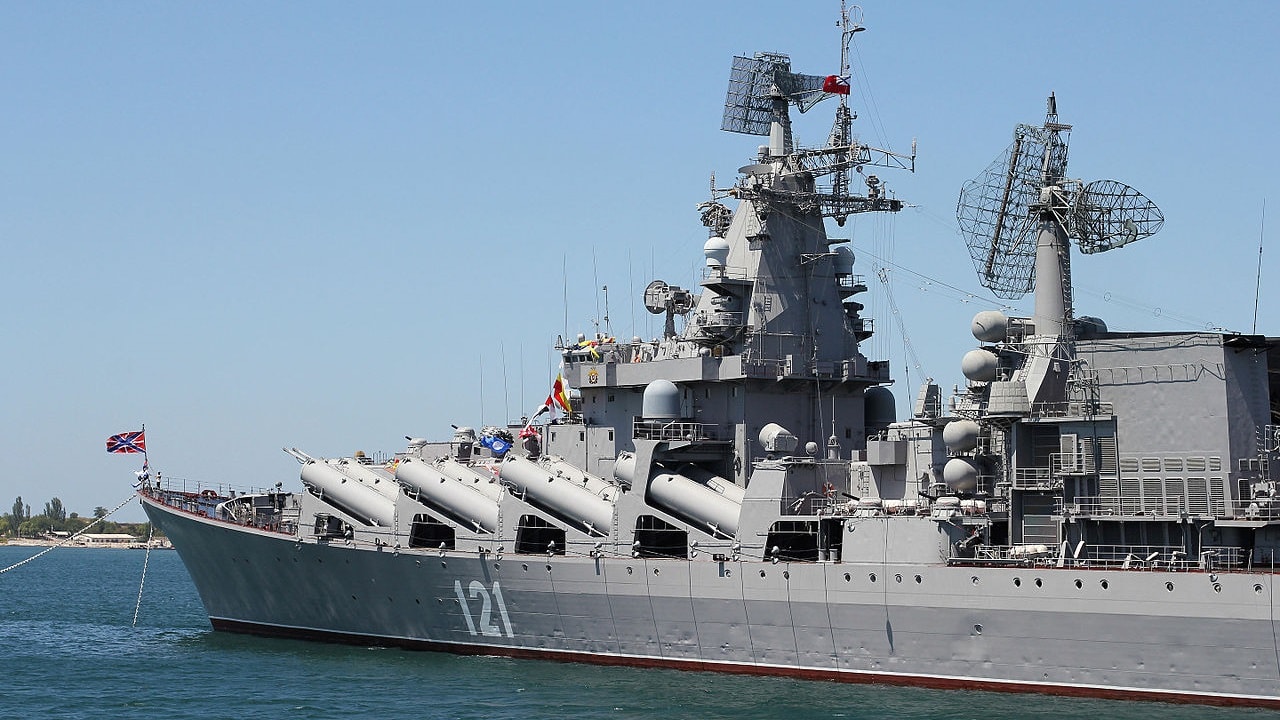What Russian Black Sea Fleet? No Longer a Serious Fighting Force: Russia’s Black Sea Fleet was founded by Prince Potemkin on May 13, 1783, along with its principal base, the city of Sevastopol. Its fleet was seen as having enormous historical and political importance for Russia. In the early 20th century, it was even seen as a serious fighting force, even as the fleet’s effectiveness was limited by the fact that its vessels must transit the Dardanelles to reach the Mediterranean Sea.
During the Second World War, and despite the capture of Crimea, the Black Sea Fleet still took part in operations against the German invaders – with sailors even taking part in the Battle of Stalingrad.
Russia’s Black Sea Fleet: A Shell of Its Former Self
Following the collapse of the Soviet Union in 1991, the Black Sea Fleet was partitioned between the Russian Federation and Ukraine. Moscow received title to 82 percent of the vessels, and later took control of much of the Ukrainian Navy’s small fleet following the 2014 annexation of Crimea.
Though Kyiv’s navy now consists of little more than a handful of U.S. Navy “Defiant” patrol boats, along with a few other small vessels – it could be argued that Russia’s once mighty Black Sea Fleet has been steadily diminished could cease to exist as a fighting force.
Currently, there are just seven ships left in the once-prized fleet, including one submarine missile carrier. The Black Sea Fleet sustained a series of major losses since the start of the war; most notably the loss of the flagship guided-missile cruiser Moskva, which sank following a Ukrainian missile strike. Struck by at least two locally-developed Neptune anti-ship missiles, it was the largest warship to be sunk in combat since the Second World War.
At least four other Russian vessels have also been destroyed, while the current Black Sea Fleet flagship, Admiral Makarov, was damaged in an attack last month. Though it didn’t sink, the vessel is believed to be disabled, and when – or even if – it could return to the fight remains an unknown.
The Russian Navy’s port facilities in Sevastopol were damaged in a separate strike on October 29. Nine unmanned aerial vehicles (UAVs) and seven maritime drones conducted a daring raid on the warships of the Black Sea Fleet. Several Russian civilian vessels were also damaged in the foray, which Moscow dubbed a “terrorist attack.”
Military analysts have suggested that the raid – though it did less damage than Kyiv may have hoped for – has proved how drone warfare could reshape future navies. The remotely controlled maritime drones were successfully able to penetrate a protected harbor, and Moscow now appears unwilling to risk its warships outside of the port.
When Russia launched its unprovoked and unwarranted invasion in February, the Black Sea Fleet was the most powerful fighting force in the region. Now it is bruised and bloodied, and fearful of even leaving Sevastapol – and for a good reason. If it attempted to sortie against Ukraine, it would likely be destroyed.
A Senior Editor for 19FortyFive, Peter Suciu is a Michigan-based writer. He has contributed to more than four dozen magazines, newspapers, and websites with over 3,000 published pieces over a twenty-year career in journalism. He regularly writes about military hardware, firearms history, cybersecurity, and international affairs. Peter is also a Contributing Writer for Forbes and Clearance Jobs. You can follow him on Twitter: @PeterSuciu.
What makes 19FortyFive special? Our articles are written by experts you can trust. Check out our lineup of exceptional talent that makes us unique. Follow us on Google News, Flipboard, YouTube, Facebook, Twitter, and Linkedin. Also, sign up for our newsletter here. You can also find our code of publishing ethics and standards here. Want to contact us? Email: [email protected].

